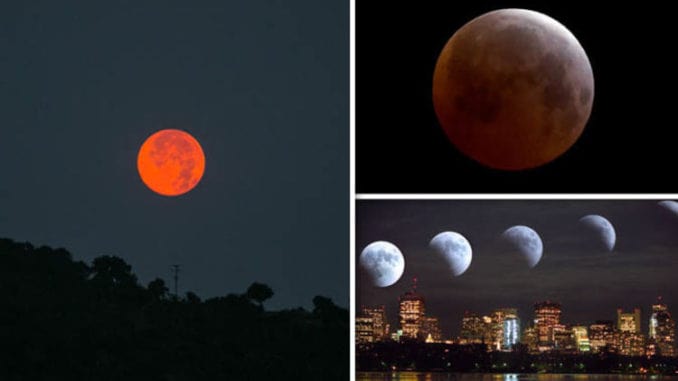
SANTIAGO – On January 31, the world witnessed a very rare phenomenon: a ‘Super Blue Blood Moon’.
The event combined three phenomenons at the same time: A blue moon, a supermoon, and a total lunar eclipse.

The full moon made a particularly close approach to Earth in its orbit, making it appear larger than normal and earning the title of supermoon. It was also a blue moon because it was the second full moon to appear this month.
Finally, the event was topped off with a lunar eclipse, which occurs when Earth moves between the moon and the sun. When this happens, the moon can sometimes look red—like blood. Thus, you have a blood moon.
Unlike solar eclipse, it’s safe to look directly at the super blue blood moon.

According to eclipse experts, the event marked the first time anyone on Earth has seen this celestial trifecta in 35 years – and the first time it’s been seen in the Americas in 150 years.
For Australia, Asia and some parts of the U.S. and Eastern Europe, there was a lunar eclipse, as the Earth passed between the Sun and the Moon.
In Chile, the full moon was viewed over Los Andes mountain range in capital Santiago.

The massive Supermoon was 14% bigger and 30% brighter than usual.
Supermoon occurs when the moon is at its closest approach to Earth. That’s because the moon’s orbit is oval-shaped and not a circle.
The last time humans saw a total eclipse of a blue moon was in 1866. The next Blood Moon will be on January 19, 2019.

On February 15, 2018, observers in South America and Antarctica will see a Partial Solar Eclipse. Those in Buenos Aires, Argentina will see a 16% eclipsed Sun while Santiago in Chile will see a 7.6% eclipse.
The further south you go, the bigger the eclipse with be, with Stanley in the Falkland Islands seeing a 40% eclipse. In Antarctica, penguins will see a 60% eclipsed Sun at sunset.
Another very slight Partial Solar Eclipse will occur on July 13, 2018 for observers in southern Australia.
The next solar totality is not until July 2, 2019, when the moon causes a narrow path of totality across the South Pacific, Chile and Argentina.



